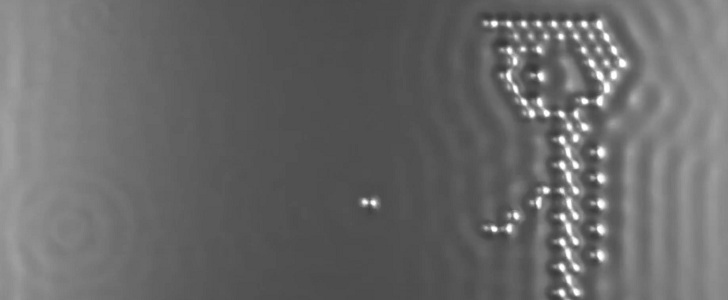IBM is one of the largest firms in the world in terms of both market capitalization and number of employees. It has held the record for most patents generated by a company for twenty consecutive years. A lot of time and effort was required to bring this company to the point is is today, but don’t let that fool you. Even the hard-working employees at IBM need to take some time off work and have a little fun.
On Tuesday, IBM released a video on their YouTube channel called “A Boy and His Atom”. It’s a short, stop-motion movie created by a small team of nanophysicists as a part of a side project. It isn’t just an ordinary movie though. According to the Guinness World Records organization, it’s the smallest movie ever made. How small you ask? The entire stop-motion movie was made by taking pictures of atoms. Ten thousand carbon-monoxide molecules, made of carbon and oxygen atoms, were arranged to show us a story of a boy and his atom.
The movie itself was short, using around three hundred frames and lasting a minute and a half, but it does a good job of showing us just how far nanotechnology has come. Nanotechnology is the manipulation of matter on an atomic and molecular scale. The atoms in the movie are about sixty picometers, or two and a half millionths of an inch, across in size. The camera had to magnify the atoms one-hundred million times to be able to see them. The end result was a short story of a small boy as he plays around with a friendly atom.


Leave a Reply